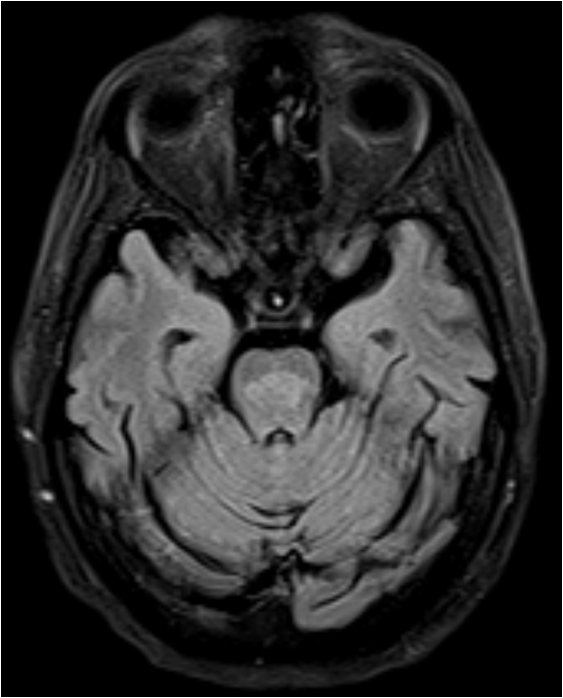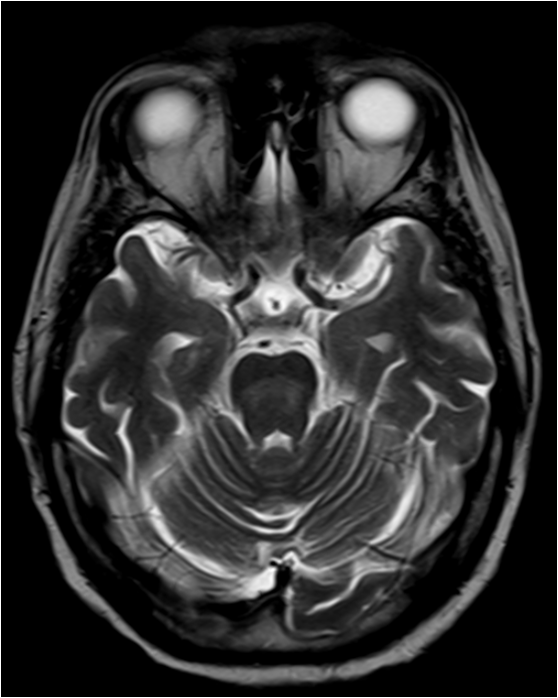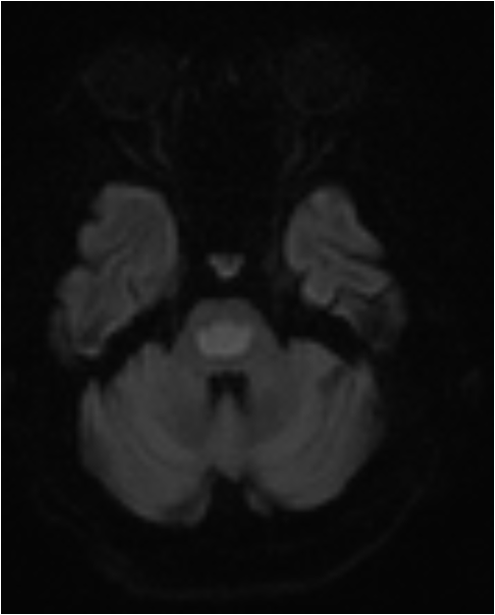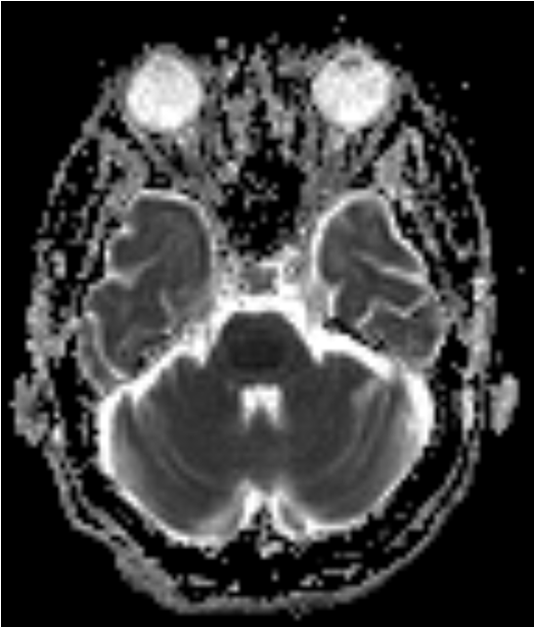40-year-old male, chronic alcoholic, presented with altered sensorium
DIAGNOSIS:
CENTRAL PONTINE MYELINOLYSIS
DISCUSSION:
- Central pontine myelinolysis (CPM) is a syndrome that is characterised by rapid destruction of myelin sheaths of mainly oligodendritic cells, generally caused by a rapid rise in serum osmolality.
- Along with extrapontine myelinolysis, it is part of the osmotic demyelination syndrome (ODS).
- In most cases, ODS occurs in patients with chronic hypotonic hyponatraemia which is corrected too quickly.
- Known risk factors include severe hyponatraemia, alcoholism, thiazide use, hypokalaemia and malnourishment.
- Symptoms include confusion, quadriplegia and pseudobulbar palsy which occur 2-6 days after a rise in serum osmolality.
- The earliest changes are seen on diffusion weighted imaging in the central pons with eventual T2/FLAIR hyperintensity and T1 hypointensity. There is sparing of the periphery (ventrolateral longitudinal fibres and corticospinal tracts) with Trident shaped appearance. The overall appearance on T2/FLAIR axial MR images has also been likened to the face of a pig, referred to as piglet sign.’
- Similar appearances are seen in other parts of the brain: basal ganglia, midbrain and subcortical white matter.
- Differentials include: demyelination; pontine infarction; rhombencephalitis; pontine neoplasms;
Dr. Sriram Patwari
MD, PDCC (Neuroradiology)
Consultant Radiology, Co-lead Neuroradiology
Manipal Hospitals Radiology Group
Dr Vikas H P
DNB resident
Manipal Hospitals Radiology Group





